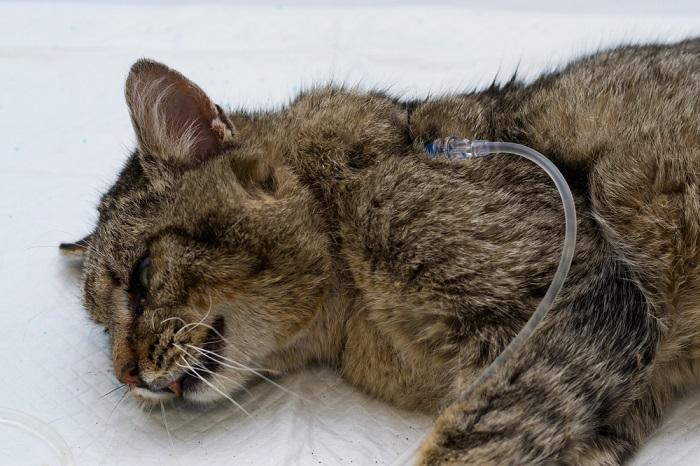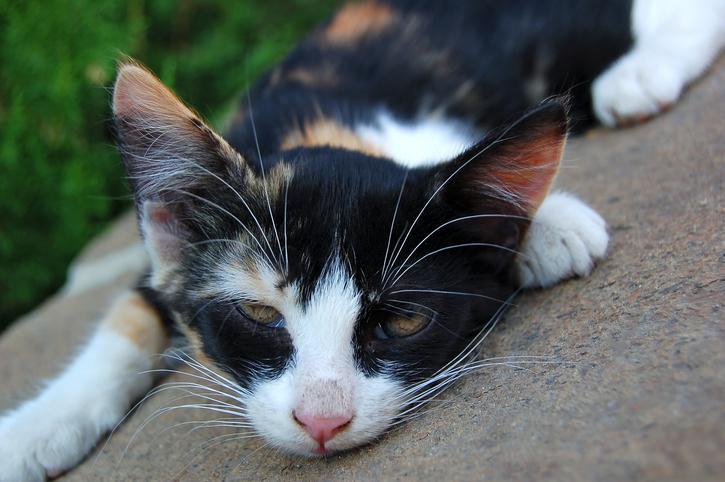What Is Dehydration In Cats?
Parchedness portrays the state of a feline when the exorbitant liquid has been lost from a feline’s body, which has then not been supplanted by adequate water from drinking. As well as the deficiency of liquid, there is normally additionally a deficiency of fundamental minerals, like sodium, potassium, and chloride.
Drying out is a difficult issue, frequently caused by fundamental medical conditions, and an inconvenience can prompt much more serious ramifications for the feline. Hence, it is vital that drying out is distinguished and remedied by rehydration, generally utilizing liquid treatment, regulated by a veterinarian.
Why Is Dehydration So Significant?
Water is fundamental for your feline’s wellbeing. Felines need to constantly supplant the liquids that they lose through their pee and defecation. Water is fundamental for your feline’s overall dissemination, absorption, and waste evacuation. In the event that parchedness is left untreated in a feline, the condition can prompt other serious clinical worries.
Reasons for Dehydration In Cats
Extensively, parchedness happens when a feline experiences extreme liquid/water misfortune or potentially doesn’t hydrate.
The most well-known basic reasons for parchedness are:
Constant renal disappointment (ongoing kidney infection)
Gastrointestinal issues like regurgitating or losing bowels
Breakdown because of numerous potential causes
Hypovolemic shock because of numerous potential causes
Heat stroke or overheating
Medical procedure (during and after sedation)
Metabolic emergencies and ailments, like hyperthyroidism, hypoglycemia, or diabetes mellitus
Harming
What Are The Signs Of Dehydration?
Side effects of parchedness incorporate the accompanying:
Bluntness and shortcoming
Breakdown
Absence of craving
Indented eyes
A feline’s gums will feel dry and cheap to contact
The feline might visit the litter box once in a while, delivering just limited quantities of pee
The clearest method for deciding whether a feline is truly got dried out is by skin rising. At the point when the skin overlying the feline’s side or shoulders is delicately squeezed, it ought to regularly straighten down again quickly because of normal skin flexibility.
On the off chance that a feline is experiencing serious parchedness (over 10% got dried out), the skin is less flexible, and squeezed skin stays in a raised, tent-like shape. This is a fundamental trial of lack of hydration, and in the event that your feline’s skin “tents,” critical rehydration by a veterinarian is required.
How Do Veterinarians Administer Fluid Therapy To Treat Dehydration In Veterinary Hospitals?
To start with, how much liquid is required is determined by your veterinary experts, and this depends on various variables:
The sickness or circumstance
The presence of hypovolemia as well as parchedness (decreased blood volume, e.g., after an episode of dying)
The level of parchedness
Progressing misfortunes of liquids (e.g., in the event that a feline is dying, regurgitating, or having loose bowels)
Pee yield
The veterinarian computes two significant volumes of liquid. First is the underlying bolus of liquid to be given to address the liquid shortfall endured by the feline. This is a moderately enormous volume, which is given all the more rapidly.
Second, the volume is expected to accommodate support liquids in view of the typical loss of liquids and the need to trade liquids for a feline.
Giving the right measure of fluid is significant. On the off chance that a lot of liquid is given, over the natural course of time, there is a serious gamble of perilous liquid over-burden, where liquid breaks from the circulatory system into the lungs, prompting pneumonic edema, which is a hazardous entanglement.
Once in a while, injectable liquids might be given subcutaneously rather than intravenously, and this might be finished at home by feline carers. The liquids are normally regulated between the shoulder bones along the feline’s back, heeding direction given by your veterinarian. This isn’t quite as powerful as an intravenous liquid organization, and it is for the most part held for explicit cases (like home therapy for chosen instances of constant renal disappointment).

The amount Does It Cost To Treat A Cat With Dehydration?
The expense of liquid treatment incorporates the expendable supplies (needles, intravenous cannula, dressings, plastic tubing, packs of sterile liquids) as well as the utilization of the gear (liquid siphons and stands), and the expert time expected to set up and screen the organization of liquid treatment. While giving subcutaneous liquid treatment at home, the expense of the disposables should be covered.
It is difficult to gauge the exact expense, as there are countless potential elements happening behind the scenes of individual cases. You ought to ask your veterinarian for a point-by-point gauge prior to consenting to continue with treatment.
In any case, as a wide sign, liquid treatment in a medical clinic setting might cost $100 to $200 to set up, with a comparative day-to-day sum for support however long it is required. Home sub-cutaneous liquid treatment might cost $50 to $150 for the hardware and preparation required.

